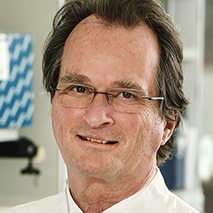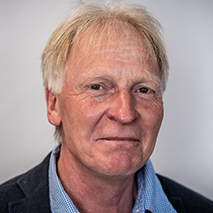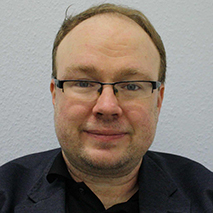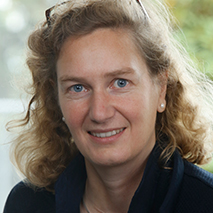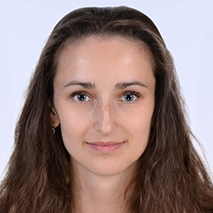Es muss weiterlaufen: Blutspende in pandemischen Zeiten
Die Flutkatastrophe und ihre Auswirkungen auf den DRK-Blutspendedienst
Del – das weak D Ostasiens?
Zusammenfassung
Die Bezeichnung Del beschreibt einen RhD-positiven Phänotyp der Erythrozyten, bei denen sich das Antigen D nur mittels Adsorption / Elution nachweisen lässt. Die molekularen Ursachen sind mannigfaltig, wobei Missense-Mutationen und Spleiß-Mutationen im Vordergrund stehen. Die ISBT unterscheidet derzeit 48 Del-Typen. In Ostasien besitzt ein erheblicher Teil der in der Routine-Serologie RhD-negativ erscheinenden Personen einen DelPhänotyp. Im ganz überwiegenden Fall ist das Folge des „asiatischen DELAllels“ RHD*01EL.01. Anti-D-Immunisierungen wurden bei diesem DEL-Typ bisher nicht beschrieben. Es ergibt sich somit in ostasiatischen Ländern bei RHD*01EL.01 eine ähnliche Situation wie in den deutschsprachigen Ländern bei weak D Typ 1 bis 3.
The designation Del indicates an RhD positive phenotype of red blood cells, in which the presence of antigen D can only be demonstrated by adsorption and elution. The molecular causes are diverse, missense mutations and splice site mutations are the most frequently observed mechanisms. Currently, ISBT list 48 different Del types. In East Asia, a relevant part of individuals RhD negative in routine serology display a Del phenotype. In the vast majority of these individuals, the Del phenotype is caused by the “Asian type DEL allele” RHD*01EL.01. Anti-D-immunization has not been reported in patients with this DEL alleles. Therefore, the relevance of RHD*01EL.01 in East Asian countries is analogue to that of weak D type 1 to type 3 in the German-speaking countries.
Hochdurchsatz-Sequenzierung – Anwendung in der Thrombozytendiagnostik
Zusammenfassung
Die neueren Verfahren der DNA-Sequenzierung (Next Generation Sequencing, NGS) beruhen auf der parallelen Analyse zahlreicher DNA-Abschnitte und werden auch als Hochdurchsatz-Sequenzierung bezeichnet. Die Anwendungsgebiete erstrecken sich zunehmend auf die Diagnostik von Erkrankungen mit komplexen Pathomechanismen. Sowohl genspezifische als auch ganz-genomische Analysen kommen dabei zum Einsatz. Erbliche Störungen der Thrombozytenfunktion oder Thrombozytenbildung werden durch zahlreiche verschiedene Gendefekte verursacht. In der Mehrzahl der Fälle können aufgrund des Phänotyps die beteiligten Gene eingegrenzt werden. Mittels NGS können sowohl bekannte als auch neue Genmutationen identifiziert werden. In diesem Übersichtsbeitrag werden die Möglichkeiten und Grenzen der NGS-Technologien in der Thrombozytendiagnostik zusammengefasst.
Next Generating Sequencing (NGS) is characterized by the parallel analysis of large numbers of DNA targets, also named ‘massively parallel sequencing’. NGS started to be used in clinical diagnosis of diseases with komplex pathomechanisms. Both, gene-specific and whole genome analyses are performed. Inherited disorders of platelet function and biosynthesis are caused by many different gene defects. In most of the cases the phenotype enables to focus on a limited number of involved genes and NGS enables the identification of known and novel gene mutations. In this review article the chances and limitations of NGS technologies in platelet diagnostics are summarized.
Immunhämatologische Diagnostik bei einer Patientin mit bekannten multiplen Alloantikörpern
Zusammenfassung
Bei einer Patientin mit bekannten erythrozytären Antikörpern (Anti-Jk(a), Anti-K und Anti-E) erfolgte in unserem Labor eine Abklärung des aktuellen Antikörperbefundes. Mit kommerziell erhältlichen Testmethoden konnte in der Antikörperdifferenzierung nur ein panreaktives Ergebnis ermittelt werden. Erst unter Verwendung von speziellen Untersuchungsansätzen (AdsorptionsElutions-Techniken, neutralisierende Proteine und Spezialtestzellen mit fehlenden hochfrequenten Antigenen) konnte die zusätzliche Spezifität eruiert werden. Dabei handelte es sich um einen Antikörper mit der Allospezifität Anti-LW(a), der einen Titer von über 64.000 aufwies. Die molekulargenetische Sequenzierung des zugehörigen Gens LW (= ICAM4) mit dem Nachweis des Allels LW*07 in homozygoter Ausprägung unterstützte unsere Annahme eines zusätzlich gebildeten Alloantikörpers.
In a patient with known red blood cell antibodies (anti-Jk(a), anti-K and antiE), an investigation of the current antibody findings should be performed in our laboratory. With commercially available test methods for antibody identification, only a panreactive result could be determined. By using special assay approaches, i.e. a combination of adsorption-elution techniques and both neutralizing proteins and special test cells lacking high frequency antigens, an additional allospecificity could be elicited: anti-LW(a) with a titer > 64,000. Genotyping of the corresponding gene LW (= ICAM4) revealed LW*07 in homozygous expression. This finding supported our assumption of an additionally formed alloantibody.
Immunhämatologische Aspekte „vertraulicher Geburten“ im Klinikalltag
Das Knochenmark als neuer Spieler im Feld der hämatopoetischen Stammzelltransplantation
Zusammenfassung
Beim Verständnis der Mikroumgebung des Knochenmarks (KMM) für die normale Hämatopoese und Leukämopoese wurden große Fortschritte erzielt. Die Wechselwirkungen zwischen dem KMM und den hämatopoetischen Zellen sind reziprok und involvieren auf Seiten des KMMs ossäre Zellen, Endothelzellen, mesenchymale Stromazellen, aber auch die extrazelluläre Matrix, Zytokine und chemische Faktoren. Die hämatopoetische Stammzelltransplantation (HSZT), die damit verbundene Chemotherapie und Bestrahlung sowie immunologische Aspekte der HSZT tragen in hohem Maße zur Komplexität des KMMs bei, welches die erfolgreiche Eradikation leukämischer Stammzellen nach HSZT beeinflusst und gleichzeitig das Einnisten, die Erhaltung und Differenzierung der transplantierten normalen hämatopoetischen Stammzellen ermöglicht. Dieser Artikel soll eine kurze Einführung in die Bedeutung des KMMs für die HSZT und neue Ansätze für ein mögliches Therapieren des KMMs bieten, um die klinischen Ergebnisse nach autologer und allogener HSZT zu verbessern.
Much progress has been made in the understanding of the bone marrow microenvironment (BMM) for normal haematopoiesis and leukaemopoiesis. These interactions between the BMM and the haematopoietic cells are reciprocal and on the side of the BMM may involve osteolineage cells, endothelial cells, mesenchymal stromal cells, but also the extracellular matrix, cytokines and chemical factors. Haematopoietic stem cell transplantation (HSCT), its associated chemotherapy and irradiation and immunological aspects of HSCT greatly contribute to the complexity of the BMM, which influences the successful eradication of leukaemic stem cells, while allowing the engraftment, maintenance and differentiation of the transplanted normal haematopoietic stem cells. This review is aimed at providing a brief introduction to the implications of the BMM for HSCT and novel approaches for potential targeting of the BMM, in order to improve outcomes after autologous and allogeneic HSCT.
Vor 70 Jahren: Erster öffentlicher Blutspendetermin in Deutschland
How do we …? / Wie machen wir …? Als Transfusionsverantwortlicher / Transfusionsbeauftragter: Basis-Schulung Hämotherapie für das ärztliche Kollegium
Zusammenfassung
Eine Basis-Schulung Hämotherapie sollte regelmäßig von den Transfusionsbeauftragten für neue ärztliche Mitarbeiterinnen und Mitarbeiter angeboten werden. Darüber hinaus können auch von der Pflegedienstleitung Teile der Fortbildung für die Ausbildung im pflegerischen Bereich verwendet werden. Der folgende Beitrag umfasst wichtige Anteile der Basis-Schulung und enthält zusätzlich Abbildungen zum Herunterladen auf der Homepage unter https://www.drk-haemotherapie.de. Anforderung von Blutpräparaten, transfusionsmedizinische Anamnese, Indikationsstellung, Herstellung und Testung der Blutpräparate, immunhämatologische Diagnostik, Überprüfung der Blutprodukte, Blutgruppen-Kompatibilität, AB0-Identitätstest, Vorbereitung und Durchführung der Transfusion sowie Überwachung, Nachsorge und Dokumentation sind in dieser BasisSchulung enthalten.
A basic training course „haemotherapy“ should be provided for new and unexperienced physicians on a regular basis by the responsible personnel for blood transfusion. For nurses, parts of this training course can also be of value. This article comprises important parts of the abovementioned basic training course as well as figures, which can be downloaded from the homepage https://www.drk-haemotherapie.de. Ordering of blood components, transfusion history, indication, production and testing of blood components, immunohaematological diagnostic, control of blood bags, blood group compatibility, bedside test, preparation and transfusion procedure as well as monitoring, follow-up care and documentation are parts of this basic training course.

